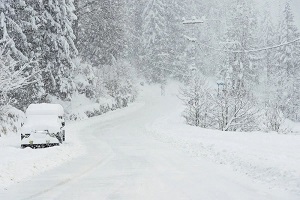Objectives: Develop vocabulary related to the environment.
Practise prepositions of place, time and movement
I. VOCABULARY

Blizzard /ˈblɪz.ɚd/
A severe snow storm with strong winds
A severe snow storm with strong winds

Drought /draʊt/
A long period when there is little or no rain
A long period when there is little or no rain

Flood flʌd/
A large amount of water covering an area that is usually dry
A large amount of water covering an area that is usually dry

Fog /fɑːɡ/
A mass of cloud consisting of small drops of water near the surface of the earth
A mass of cloud consisting of small drops of water near the surface of the earth

Heat /hiːt/
Warmth, esp. a lot of warmth
Warmth, esp. a lot of warmth

Wave /weɪv/
A raised movement of water rolling across the surface esp. of the sea
A raised movement of water rolling across the surface esp. of the sea

Hurricane /ˈhɝː.ɪ.keɪn/
A violent storm with strong circular winds of at least 72 miles (or 118 kilometers) per hour, esp. in the western Atlantic Ocean
A violent storm with strong circular winds of at least 72 miles (or 118 kilometers) per hour, esp. in the western Atlantic Ocean

Lightning /ˈlaɪt.nɪŋ/
A flash of bright light in the sky produced by electricity moving within or between clouds, or between clouds and the ground
A flash of bright light in the sky produced by electricity moving within or between clouds, or between clouds and the ground
II. LANGUAGE DEVELOPMENT
Underline the prepositions in the sentences. What does each one refer to? Write T for time, P for place or M for movement.
1. The graph shows the temperatures in 2016
2. They were heading towards the river.
3. The recycling centre is behind the post office.

